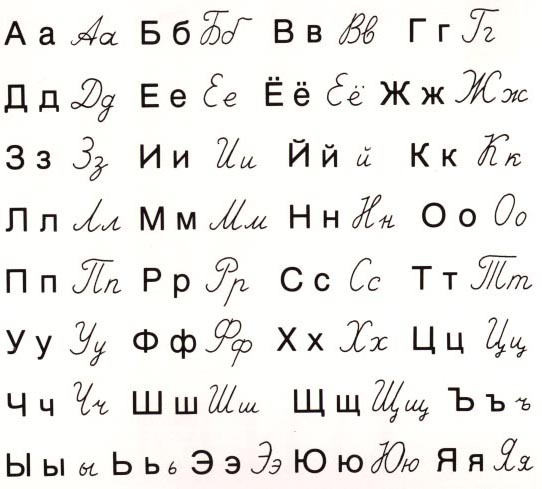Friday, October 27, 2006
0
 Cyrillic alphabet
Cyrillic alphabet
Cyrillic alphabet
The layout of the alphabet is derived from the early Cyrillic alphabet, itself a derivative of the Glagolitic alphabet, a ninth century uncial cursive usually credited to two Byzantine monk brothers from Thessaloniki, Saint Cyril and Saint Methodius.
It is widely accepted that the Glagolitic alphabet was invented by Saints Cyril and Methodius, the origins of the early Cyrillic alphabet are still a source of much controversy. Though it is usually attributed to Saint Clement of Ohrid, disciple of Saint Cyril and Saint Methodius from Bulgarian Macedonia, the alphabet is more likely to have developed at the Preslav Literary School in northeastern Bulgaria, where the oldest Cyrillic inscriptions have been found, dating back to the 940s. The theory is supported by the fact that the Cyrillic alphabet almost completely replaced the Glagolitic in northeastern Bulgaria as early as the end of the tenth century, whereas the Ohrid Literary School—where Saint Clement worked—continued to use the Glagolitic until the twelfth century. Of course, as the disciples of St. Cyril and Methodius spread throughout the First Bulgarian Empire, it is likely that these two main scholarly centres were a part of a single tradition.
Among the reasons for the replacement of the Glagolithic with the Cyrillic alphabet is the greater simplicity and ease of use of the latter and its closeness with the Greek alphabet, which had been well known in the First Bulgarian Empire.
There are also other theories regarding the origins of the Cyrillic alphabet, namely that the alphabet was created by Saint Cyril and Saint Methodius themselves, or that it preceded the Glagolitic alphabet, representing a "transitional" stage between Greek and Glagolitic cursive, but these have been widely disproved. Although Cyril is almost certainly not the author of the Cyrillic alphabet, his contributions to the Glagolitic and hence to the Cyrillic alphabet are still recognised, as the latter is named after him.
The alphabet was disseminated along with the Old Church Slavonic liturgical language, and the alphabet used for modern Church Slavonic language in Eastern Orthodox and Eastern Catholic rites still resembles early Cyrillic. However, over the following ten centuries, the Cyrillic alphabet adapted to changes in spoken language, developed regional variations to suit the features of national languages, and was subjected to academic reforms and political decrees. Today, dozens of languages in Eastern Europe and Asia are written in the Cyrillic alphabet.
It is widely accepted that the Glagolitic alphabet was invented by Saints Cyril and Methodius, the origins of the early Cyrillic alphabet are still a source of much controversy. Though it is usually attributed to Saint Clement of Ohrid, disciple of Saint Cyril and Saint Methodius from Bulgarian Macedonia, the alphabet is more likely to have developed at the Preslav Literary School in northeastern Bulgaria, where the oldest Cyrillic inscriptions have been found, dating back to the 940s. The theory is supported by the fact that the Cyrillic alphabet almost completely replaced the Glagolitic in northeastern Bulgaria as early as the end of the tenth century, whereas the Ohrid Literary School—where Saint Clement worked—continued to use the Glagolitic until the twelfth century. Of course, as the disciples of St. Cyril and Methodius spread throughout the First Bulgarian Empire, it is likely that these two main scholarly centres were a part of a single tradition.
Among the reasons for the replacement of the Glagolithic with the Cyrillic alphabet is the greater simplicity and ease of use of the latter and its closeness with the Greek alphabet, which had been well known in the First Bulgarian Empire.
There are also other theories regarding the origins of the Cyrillic alphabet, namely that the alphabet was created by Saint Cyril and Saint Methodius themselves, or that it preceded the Glagolitic alphabet, representing a "transitional" stage between Greek and Glagolitic cursive, but these have been widely disproved. Although Cyril is almost certainly not the author of the Cyrillic alphabet, his contributions to the Glagolitic and hence to the Cyrillic alphabet are still recognised, as the latter is named after him.
The alphabet was disseminated along with the Old Church Slavonic liturgical language, and the alphabet used for modern Church Slavonic language in Eastern Orthodox and Eastern Catholic rites still resembles early Cyrillic. However, over the following ten centuries, the Cyrillic alphabet adapted to changes in spoken language, developed regional variations to suit the features of national languages, and was subjected to academic reforms and political decrees. Today, dozens of languages in Eastern Europe and Asia are written in the Cyrillic alphabet.
Subscribe to:
Post Comments (Atom)









0 коментара:
Post a Comment